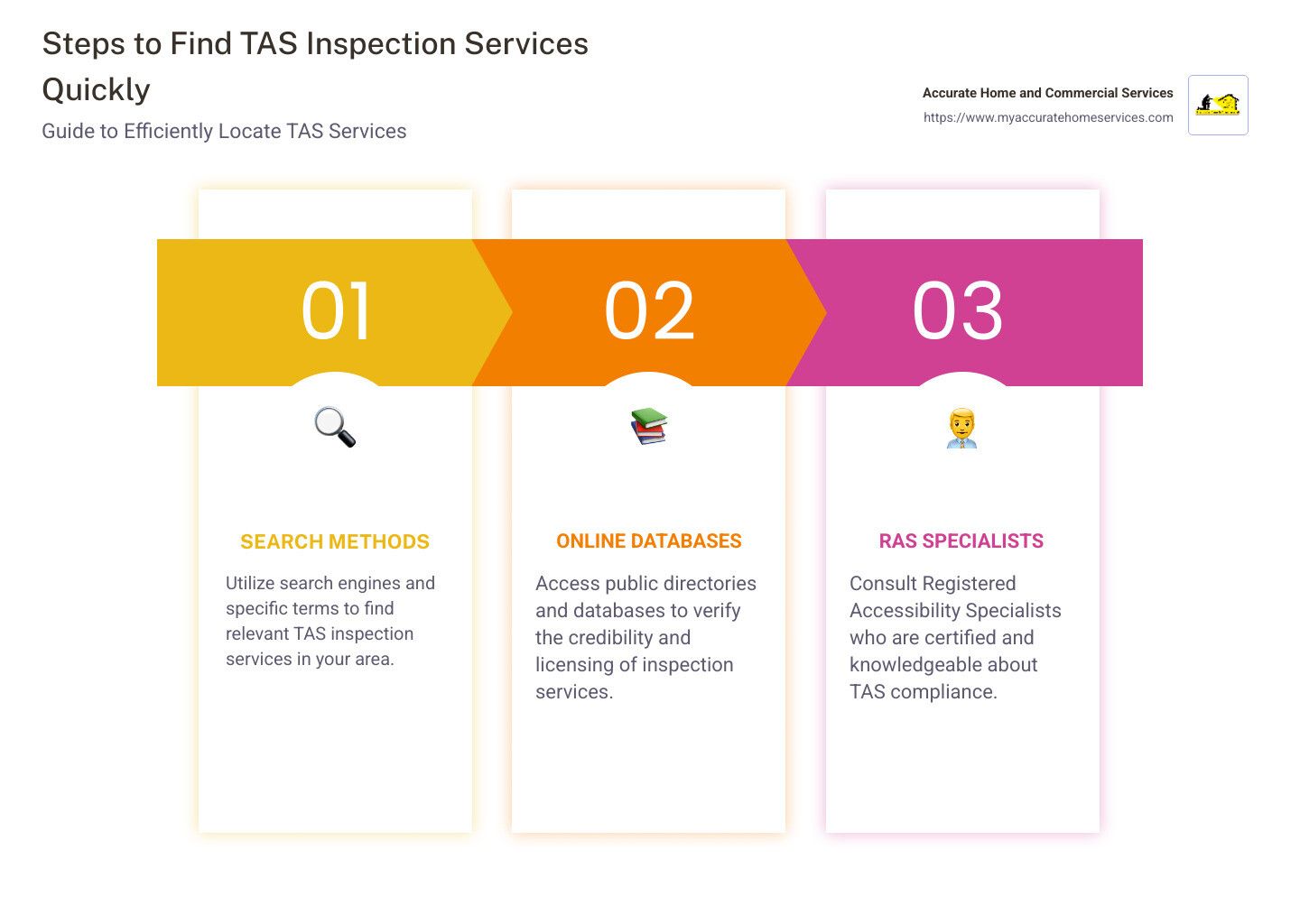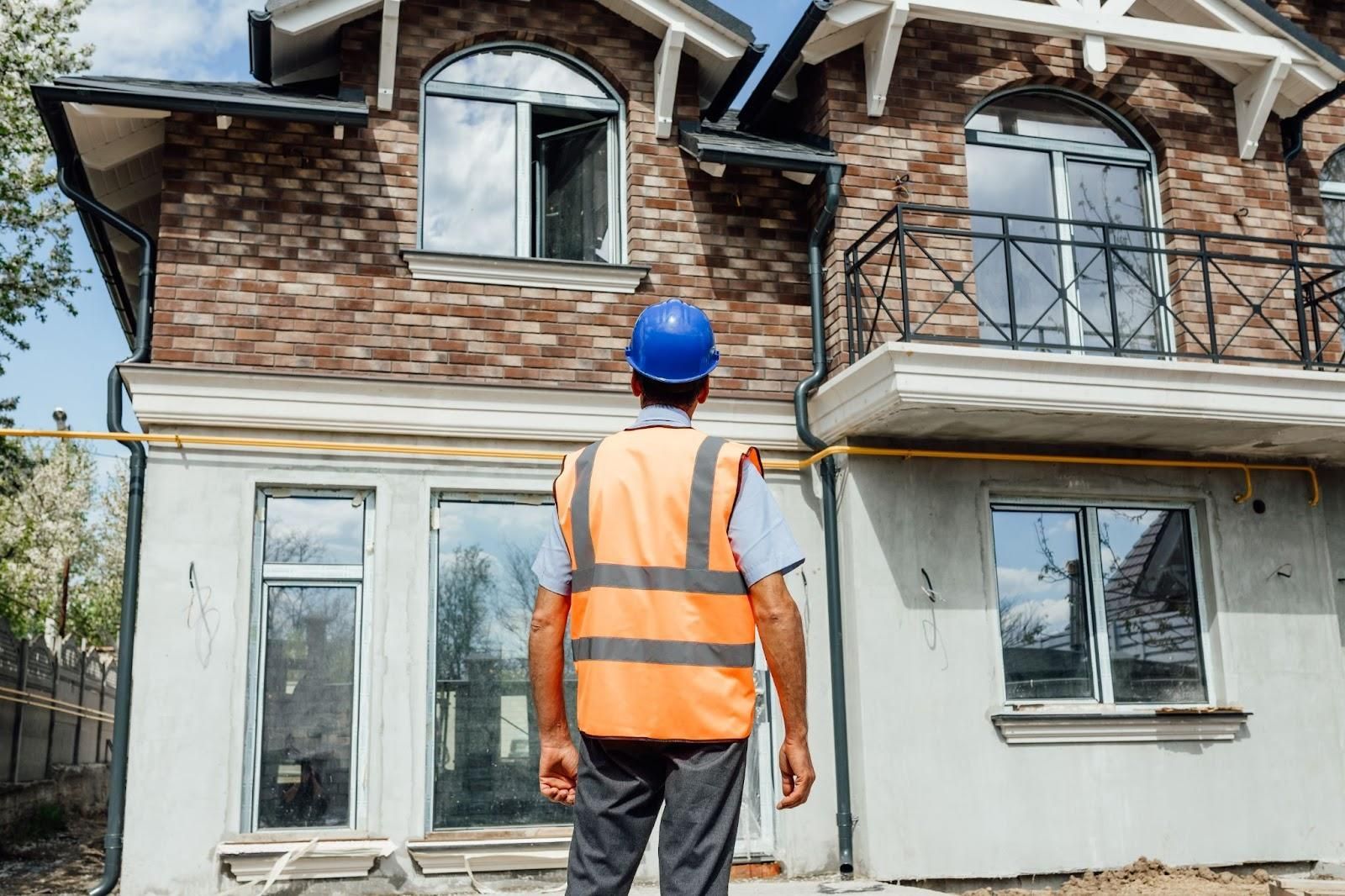How to Find TAS Inspection Services in Less Than an Hour
TAS inspections play a crucial role in ensuring that buildings and facilities across Texas are accessible to everyone, including people with disabilities. These inspections evaluate whether a property complies with the Texas Accessibility Standards (TAS), which are guidelines set by the Texas Department of Licensing and Regulation (TDLR). The standards aim to improve accessibility, safety, and inclusivity in both public and private spaces.
To quickly find TAS inspection services:
- Understand the basics: Learn about TAS and its importance in accessibility and compliance.
- Search online: Use databases and search engines to connect with registered RAS (Registered Accessibility Specialists).
- Contact local experts: Reach out to local TAS-certified inspection services in Greater Houston to ensure thorough and timely evaluations.
Ensuring your property meets TAS guidelines is essential for compliance and embracing inclusivity within your community.

Understanding TAS Inspections
When it comes to making buildings accessible to everyone, TAS inspections are essential. TAS stands for Texas Accessibility Standards, and these guidelines ensure that spaces are usable for people with disabilities. The Texas Department of Licensing and Regulation (TDLR) sets these standards to align with the Americans with Disabilities Act (ADA).
Why TAS Inspections Matter
TAS inspections check if a building follows accessibility rules. These rules cover various aspects like entrances, exits, parking, and restrooms. Inspectors look for barriers that might prevent people with disabilities from accessing a building easily. If a building doesn't meet these standards, it needs changes to comply.
The Inspection Process
A certified inspector conducts a thorough review of the property. They assess:
- Entrances and Exits: Are doorways wide enough? Are ramps correctly installed?
- Parking Areas: Is there proper signage? Are spaces accessible?
- Interior Spaces: Are hallways and restrooms accessible?
- Accessibility Features: Are ramps, handrails, and signage in place and functional?
Inspectors provide a detailed report if they find any issues. This report includes recommendations for fixing problems to meet TAS guidelines.
Compliance with ADA
While TAS is specific to Texas, it aligns with the federal ADA guidelines. This means that by following TAS, a building is also likely to meet ADA requirements. Compliance is not just about avoiding penalties—it's about ensuring everyone can access and use facilities safely and comfortably.
In short, understanding and implementing TAS inspections is crucial for creating inclusive environments. It's about more than just following rules; it's about making spaces welcoming for everyone.
Steps to Find TAS Inspection Services Quickly
Need to find TAS inspection services fast? Here’s a simple guide to help you locate the right service in less than an hour.
1. Use Online Databases
Start by visiting the Texas Department of Licensing and Regulation (TDLR) License Data Search. This tool helps you find a Registered Accessibility Specialist (RAS) near your project area.
- Select 'Registered Accessibility Specialist' under 'Inquire by License Type.'
- For better results in less populated areas, search by County rather than City.
This quick search can connect you to licensed professionals who are certified to perform TAS inspections.
2. Contact RAS Specialists Directly
Once you have a list of potential inspectors, reach out to them directly. A quick phone call or email can help you understand their availability and fees. For instance, you can contact RAS Ernesto Sarabia at (460) 222-7127 or email him at [email protected] to request an inspection.
3. Explore Local Resources
If you're in areas like Greater Houston, Conroe, or The Woodlands, Accurate Home and Commercial Services can assist. They offer certified TAS inspections and are known for their reliable service. Check if they are currently accepting new requests for inspections.
4. Consider Preliminary Inspections
For those who want to ensure compliance throughout the construction process, consider requesting a preliminary inspection. Accurate Home and Commercial Services offer this option, which can help identify potential issues early on. Additional fees may apply for this service.
5. Plan Reviews
Before construction begins, a TAS Plan Review ensures your building plans meet accessibility standards. Contact a certified plan examiner to review your plans. This proactive step can save time and money by preventing future compliance issues.
By following these steps, you can quickly and efficiently find the right TAS inspection services to ensure your project meets all necessary accessibility standards.
Key Considerations for TAS Inspections
When you're gearing up for a TAS inspection, understanding the critical elements that can impact your project's compliance is essential. Here are some important factors to keep in mind:
- Inspection Requirements: Ensure all necessary documentation and plans are ready for review. This includes architectural drawings and specifications that demonstrate compliance with the Texas Accessibility Standards.
- Compliance Certificates: Secure any required compliance certificates that attest to the adherence of your project to accessibility standards. These documents are crucial for passing the inspection.
- Non-Compliance Issues: Identify potential areas of non-compliance beforehand. This proactive approach allows you to address issues like improper door widths or inadequate ramp slopes before the inspection.
- Accessibility Features: Verify that all accessibility features, such as handrails, ramps, and tactile signage, are correctly installed and functional. These elements are vital for ensuring the building is accessible to all individuals.
- TDLR Guidelines: Familiarize yourself with the Texas Department of Licensing and Regulation guidelines, as they provide the framework for what the TAS inspection will cover.
Inspection Requirements
TAS inspections are mandatory for certain building projects in Texas, particularly those with a construction cost of $50,000 or more. The inspection must be completed within the first year after construction is finished, as stated by the Texas Department of Licensing and Regulation (TDLR).
- Initial Compliance Check: Ensure that your project is registered with the TDLR and that a Registered Accessibility Specialist (RAS) is scheduled for the inspection.
- Plan Review: Prior to construction, a TAS Plan Review is essential to verify that your building plans align with accessibility standards. This proactive step can prevent delays and costly modifications later.
Compliance Certificates
After a successful inspection, you will receive a compliance certificate, which is necessary for building occupancy. This certificate confirms that your building meets the Texas Accessibility Standards.
- Certificate of Compliance: Issued when all accessibility features are correctly installed and meet TAS requirements.
- Non-Compliance Letter: If issues are identified, a letter will specify the non-compliant areas and the steps needed to rectify them.
Non-Compliance Issues
Non-compliance can lead to significant setbacks, so it’s vital to address any issues promptly. Common areas of concern include:
- Entrances and Exits: Ensure door widths, thresholds, and clearances are accessible.
- Parking Facilities: Check for proper signage and accessible features like ramps and access aisles.
- Interior Spaces: Verify that corridors, restrooms, and common areas are navigable for individuals with disabilities.
Addressing these issues early can save time and money, and ensure your project is up to code. Accurate Home and Commercial Services offers guidance and inspections to help you achieve compliance efficiently.
By understanding these key considerations, you can steer the TAS inspection process with confidence, ensuring that your project meets all necessary standards for accessibility.
Frequently Asked Questions about TAS Inspections
What does TAS stand for in construction?
In construction, TAS stands for Texas Accessibility Standards. These standards are a set of guidelines established by the Texas Department of Licensing and Regulation (TDLR) to ensure buildings and facilities in Texas are accessible to everyone, particularly individuals with disabilities. The guidelines are modeled after the Americans with Disabilities Act (ADA) and focus on removing architectural barriers that could hinder accessibility.
What is a TAS review?
A TAS review is an essential step in the construction process in Texas. It involves a thorough examination of building plans to ensure they meet the Texas Accessibility Standards. This review is conducted by a Registered Accessibility Specialist (RAS) and must be completed before construction begins. The inspection process checks for compliance with accessibility guidelines and identifies any potential issues that could lead to non-compliance.
- Plan Submission: Architects or owners must submit project plans for review within 20 days of project initiation.
- Compliance Check: The review ensures all aspects of the building, like entrances, exits, and restrooms, are designed to be accessible.
What is TAS compliant?
Being TAS compliant means that a building meets all the requirements set out in the Texas Accessibility Standards. Compliance is confirmed through an inspection process conducted by a certified TAS inspector. The inspector checks various elements of the building, such as door widths, ramps, handrails, and signage, to ensure they adhere to TDLR guidelines for accessibility.
- TDLR Guidelines: These are the rules set by the Texas Department of Licensing and Regulation to ensure accessibility.
- Accessibility Features: Buildings must have features like accessible parking, clear signage, and user-friendly restrooms to be deemed compliant.
Achieving TAS compliance not only fulfills legal requirements but also ensures that facilities are welcoming and accessible to all individuals, regardless of their physical abilities.
Conclusion
Accurate Home and Commercial Services stands out as a trusted provider for TAS inspections in the Greater Houston area. With their comprehensive inspection services, they ensure that every aspect of your property aligns with the Texas Accessibility Standards. This meticulous attention to detail not only guarantees compliance but also improves the overall safety and accessibility of the building.
Their team of experienced inspectors takes pride in delivering thorough evaluations, addressing potential issues before they become costly problems. By choosing Accurate Home and Commercial Services, you are opting for peace of mind and a commitment to customer satisfaction. Their goal is to make sure that your property meets all necessary standards, ensuring it is accessible and welcoming to everyone.
Whether you're a building owner or an architect, partnering with Accurate Home and Commercial Services means working with professionals who understand the intricacies of TAS compliance. Their expertise and dedication to quality service make them a reliable choice for all your inspection needs.











